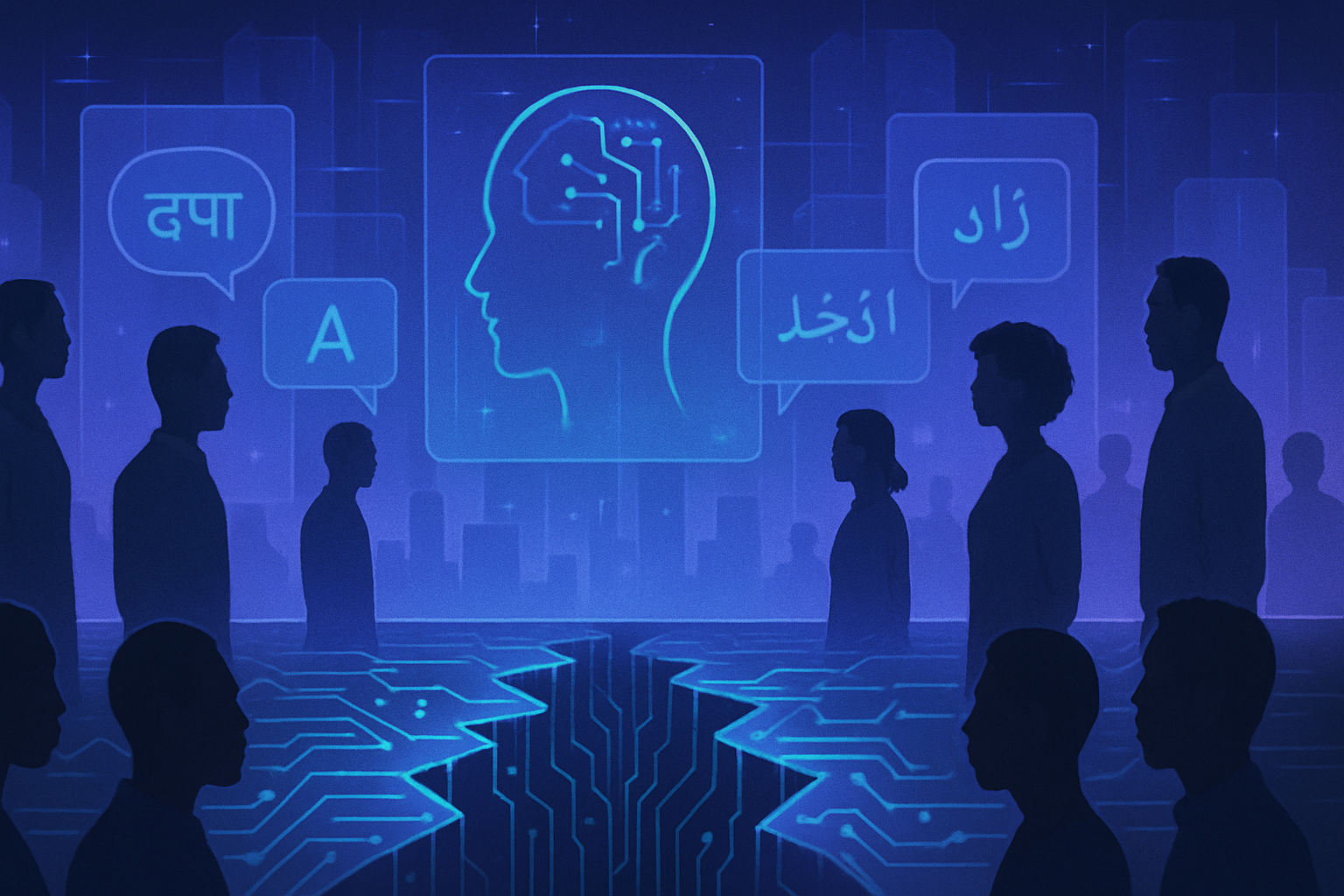The digital language divide is growing, exacerbated by artificial intelligence tools. The dominance of English and other major languages creates a clear exclusion of minority languages. Popular language models establish “information cocoons,” isolating users from diverse perspectives.
This linguistic disparity fosters biased narratives, manipulating the perception of reality. Users of low-resource languages often encounter distorted responses. In a context where the veracity of information is crucial, these obstacles compromise the democracy of access to information.
A digital language divide
Researchers at Johns Hopkins University have recently highlighted a concerning phenomenon related to the use of artificial intelligence tools, such as ChatGPT. This phenomenon, defined as a digital language divide, reveals that these tools reinforce the predominance of English and widely spoken languages, while neglecting minority languages.
The creation of an informational cocoon
By analyzing information on recent conflicts, such as the Israel-Gaza and Russia-Ukraine wars, the team led by Nikhil Sharma identified that large-scale language models cultivate informational cocoons. These, rather than breaking down language barriers, promote a biased view of reality.
A revealing experiment
Researchers developed two sets of articles: one containing truthful information and the other presenting alternative perspectives. They then queried various language models from renowned companies, including OpenAI and Cohere, to assess their handling of information derived from different articles written in various languages. The results showed that when queries were made in a given language, the language models favored relevant information in that same language.
The implications of this linguistic preference
This trend raises ethical questions about access to information. For instance, if a user queries a model in English about an Indian political figure, and the article in Hindi presents diametrically opposed information, the model will necessarily return a response based on the English text. This phenomenon illustrates the danger of linguistic dominance, which can lead to a distorted view of events.
Effects on users of minority languages
Researchers also analyzed the effects on users speaking lesser-known languages. If no information is available about a complex event in their native language, models rely exclusively on content in English or other dominant languages. Through this dynamic, users of languages like Sanskrit find themselves excluded from a fair representation of their political realities.
A distortion of perspectives
This linguistic bias creates a divide in understanding global events. Take the example of the conflict between India and China. A Hindi user will receive answers centered around Indian sources, while a Chinese speaker will access only a Sino-centered perspective. In contrast, an Arabic-speaking user, without access to the same sources, will receive a biased interpretation according to the most dominant language.
A necessary response to this phenomenon
Researchers are calling for immediate awareness of these issues. Collecting information from diverse perspectives in different languages is essential for the emergence of equitable access to information. Developing inclusive AI systems is fundamentally important to promote transparency and diversity of viewpoints.
Toward better use of AI
Researchers from universities plan to create dynamic repositories and datasets aimed at guiding future model development. These measures also include warning users who may fall into confirmatory search behavior. Educating users about the need for critical research in response to AI results is a crucial issue to avoid the spread of misinformation.
Voices like that of Nikhil Sharma emphasize that the accumulation of power over AI technology can lead to high risks. An excessive concentration of the ability to influence information makes systems vulnerable to manipulation, thus threatening the credibility of these tools. Strategies must therefore aim to ensure equitable access to information for all users, regardless of their language or background.
To further explore this topic, check out articles on the impact of generative AI, the ethical issues of AI, as well as political actions related to AI.
Frequently Asked Questions
What is a digital language divide?
The digital language divide refers to the disparity in access to information between dominant languages and those with low resources, often exacerbated by the use of multilingual AI tools.
How does multilingual AI reinforce linguistic biases?
Multilingual AI tends to favor the most spoken languages, such as English, which can distort the representation of facts and perspectives in minority languages.
What are the risks associated with using AI that does not account for minority languages?
Risks include a biased understanding of events, a reduction in the diversity of opinions, and the creation of information in “informational cocoons” that favor dominant narratives.
How can AI influence users’ decisions based on language?
The responses provided by AI can shape how users perceive events based on the language in which they pose their questions, which can lead to very different interpretations.
Which types of languages are mainly affected by this divide?
Low-resource languages, such as Hindi and Arabic, are often overlooked compared to high-resource languages like English, Chinese, and German.
Are there solutions to reduce these linguistic biases related to AI?
Yes, solutions include developing AI systems that incorporate data from multiple languages and perspectives, and encouraging information literacy among users.
How do researchers measure the bias of multilingual AI?
Researchers analyze the responses generated by AI from documents in various languages, comparing the available information and biases based on the query language.
What are the ethical implications of using multilingual AI in media?
The use of multilingual AI raises ethical concerns, particularly regarding the responsibility to provide a balanced representation of information from different cultures and languages.
How can political decisions be affected by unequal access to online information?
Unequal access can influence public opinions and decisions, allowing dominant narratives to prevail while limiting cultural and linguistic diversity in public debate.






